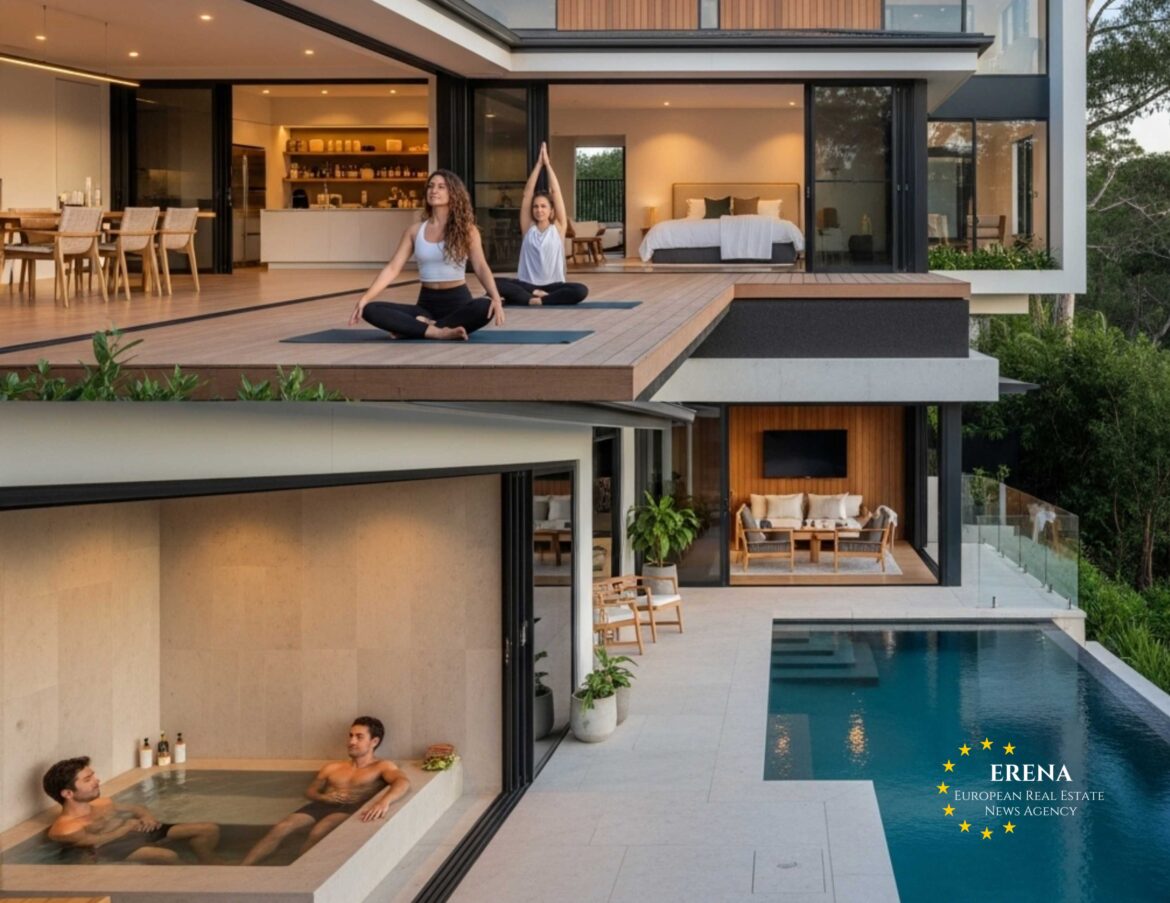Australia’s luxury residential property sector is undergoing a profound transformation. One of the most notable trends in 2025 is the shift from traditional luxury toward “conscious comfort,” with wellness amenities becoming a central focus. This is not just about spas or gyms—it’s about holistic solutions that promote physical, mental, and emotional wellbeing.
Wellness Demand as a New Market Driver
According to the latest Knight Frank Australia report, over 67% of luxury property buyers in Sydney, Melbourne, and Brisbane consider wellness features a non-negotiable factor when purchasing. These features range from infrared saunas and meditation rooms to air purification systems, circadian lighting schemes, and biophilic design.
In the post-pandemic world—where the concepts of home and health are deeply intertwined—buyers seek not only safety and status but also spaces that support recovery, mindfulness, and balance.
What Modern Wellness-Oriented Projects Include
1. Personalized Spa Zones
High-end residential developments such as One Sydney Harbour by Lendlease and Sapphire by the Gardens in Melbourne now feature private spa rooms with aromatherapy, hydrotherapy jacuzzis, and advanced massage chairs. These are not simply rooftop pools—they are integrated wellness sanctuaries built into the architecture.
2. Functional Fitness Studios
Developers are moving beyond basic gyms, offering biohacking programs, HIIT, Pilates, and barre workout studios. These areas often include virtual trainers, smart mirrors, breathing exercise equipment, and functional training tools.
3. Meditation and Sensory Retreats
Great emphasis is placed on quiet rooms, sensory pods, and vertical green spaces where residents can decompress. Increasingly, we see the integration of low-noise, softly lit, acoustically isolated spaces designed for rest and mental clarity.
4. “Healthy Air” Systems and Biophilic Design
Premium projects now feature HEPA air filtration, CO₂ monitoring, and intelligent climate control. In addition, developers are adding living green walls, natural materials, and panoramic glazing, encouraging a continuous connection with nature.
5. Circadian Rhythm Lighting
Some residences are equipped with LED systems that simulate natural light cycles, helping regulate sleep, focus, and overall mental wellness. This is particularly appealing to remote workers and digital professionals.
Locations and Price Ranges
This wellness boom is most prominent in:
- Sydney: Properties with integrated wellness features range from €2.5 million to €12 million.
- Melbourne: Luxury apartments with biophilic and functional design start at around €1.8 million.
- Brisbane & Gold Coast: Demand is rising rapidly; wellness-oriented homes range from €1.2 million to €4.5 million.
- Perth & Adelaide: These markets are also catching up, especially in mixed-use developments.
Developers and Investors Leading the Trend
Companies such as Mirvac, Gurner Group, Lendlease, and Beulah are investing heavily in wellness-centered living. Beulah’s Southbank project in Melbourne, for instance, features cryotherapy zones, sleep libraries, wellness spas, and digital detox areas.
Developers also report that wellness amenities contribute to price premiums. According to CBRE, wellness-certified properties may command a value increase of 7% to 12%.
Certification and Wellness Standards
To ensure credibility, many luxury projects are pursuing WELL Building Standard certification, which evaluates over 100 environmental and health factors. There is also growing interest in Fitwel and the Living Building Challenge, which focus on the long-term impact of built environments on human health.
Who’s Buying Wellness Homes?
The buyer profile is evolving. Today’s clientele includes:
- Young professionals and digital nomads (30–45 years old) investing in mental health and lifestyle optimization.
- Families with children, who prioritize clean air, natural lighting, and mindful relaxation spaces.
- Retirees and expats, seeking a secure and rejuvenating living environment.
Additionally, international investors from Asia and Europe are showing strong interest in sustainable wellness-integrated projects.
AI Integration and Smart Wellness
Modern wellness homes already incorporate AI-based assistants that track sleep quality, humidity, air quality, and lighting conditions. Residents receive real-time wellness advice tailored to their personal environment. These features are transforming the home into a proactive wellness companion, not just a place to live.
Notable Project Examples
- One Barangaroo (Sydney) by Crown Residences: Offers integrated wellness programs, therapeutic pools, and in-house dieticians.
- GURNER™ Saint Moritz (Melbourne): Includes a private wellness club, spa hammam, saltwater pools, and ice therapy baths.
- The Monaco (Gold Coast): A boutique building focused on privacy, sustainability, and wellness-centric amenities.
Future Outlook and Predictions
By 2028, it’s expected that over 80% of new luxury developments in Australia will feature at least one certified wellness amenity. These will no longer be optional upgrades but standard elements in premium residential design.
There is also growing interest in restorative communities outside urban centers, particularly in coastal and mountainous regions, where developers plan to build eco-villages and low-density wellness residences.
Conclusion
Wellness is becoming the new language of luxury in Australian real estate. Today’s discerning buyers are looking for more than prestige—they want balance, sustainability, and proactive care for health and wellbeing.
Developers who can anticipate and integrate these evolving expectations are not just capturing market share—they are shaping a new philosophy of living.
The future of Australia’s luxury housing market is not only smart—it’s healthy.

